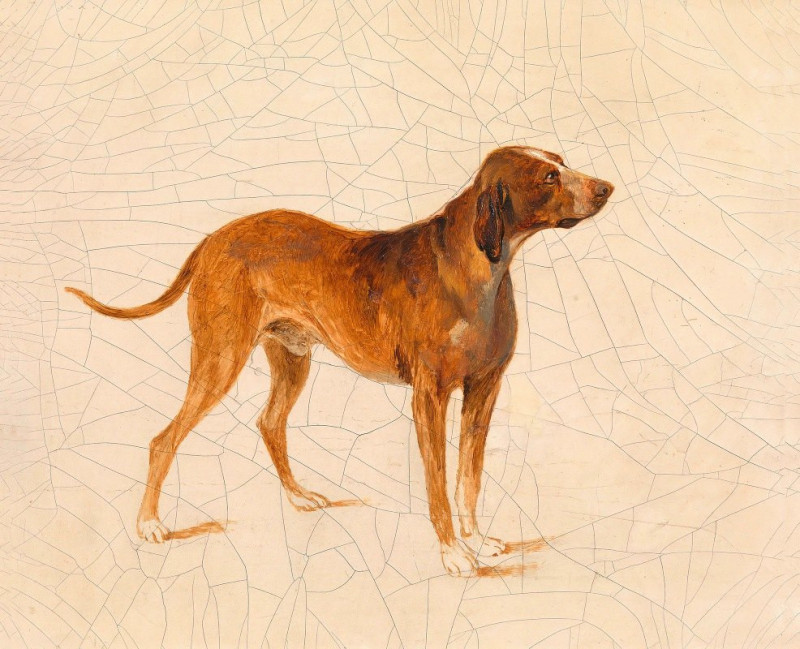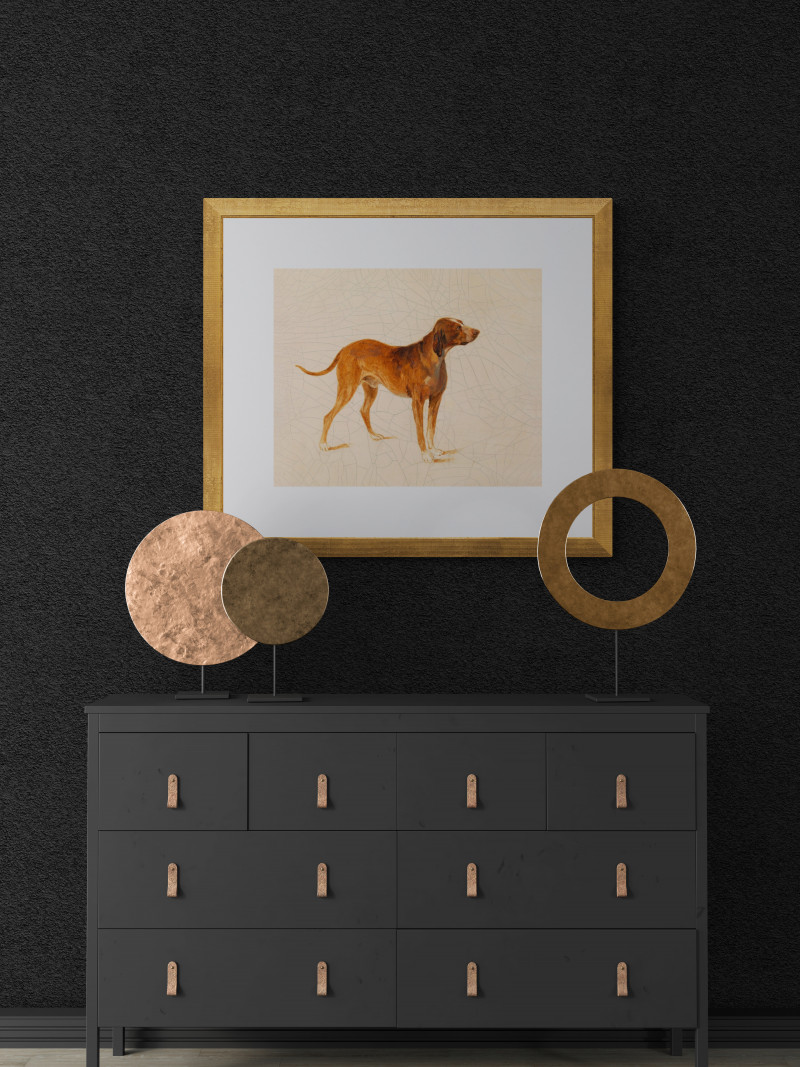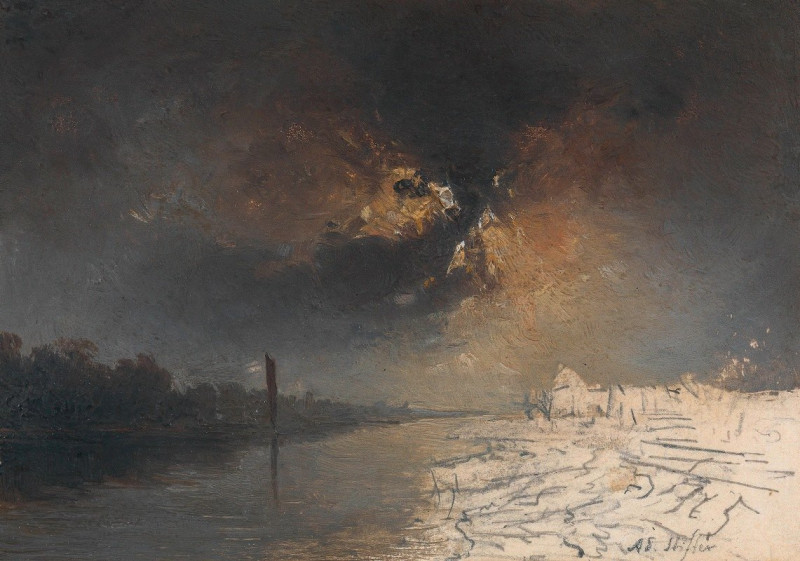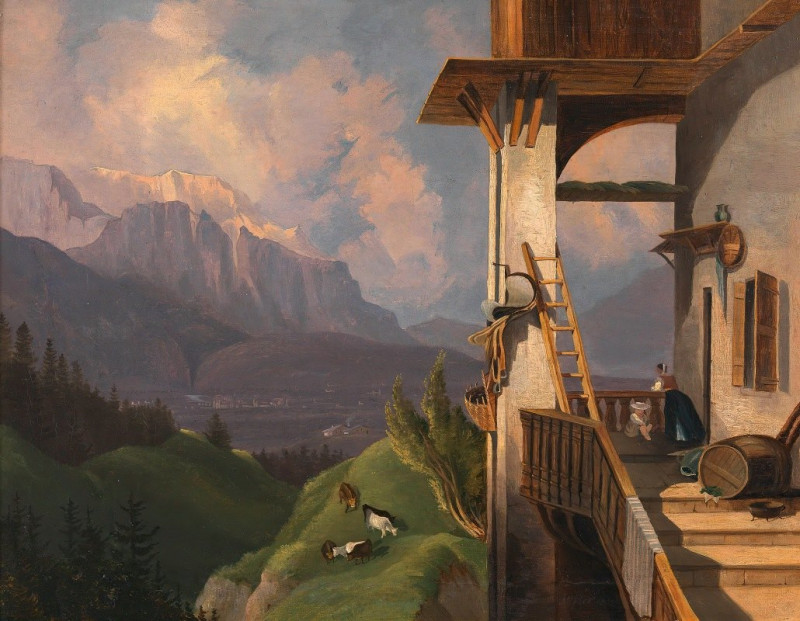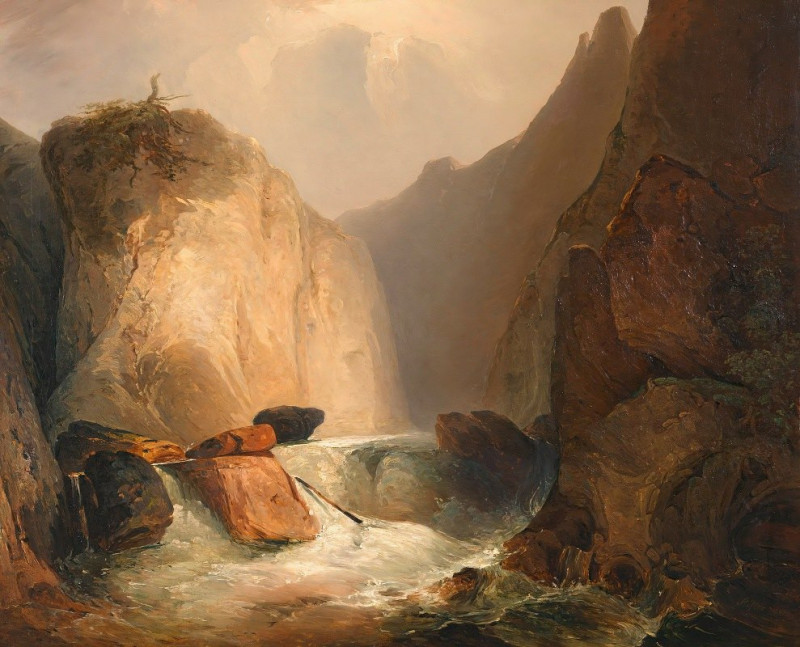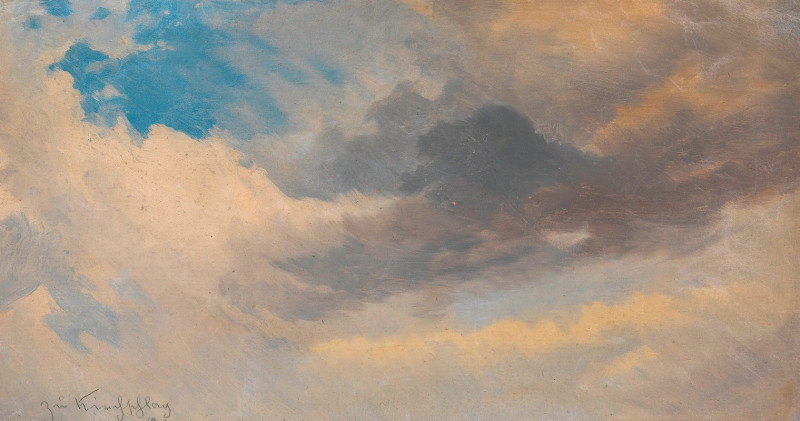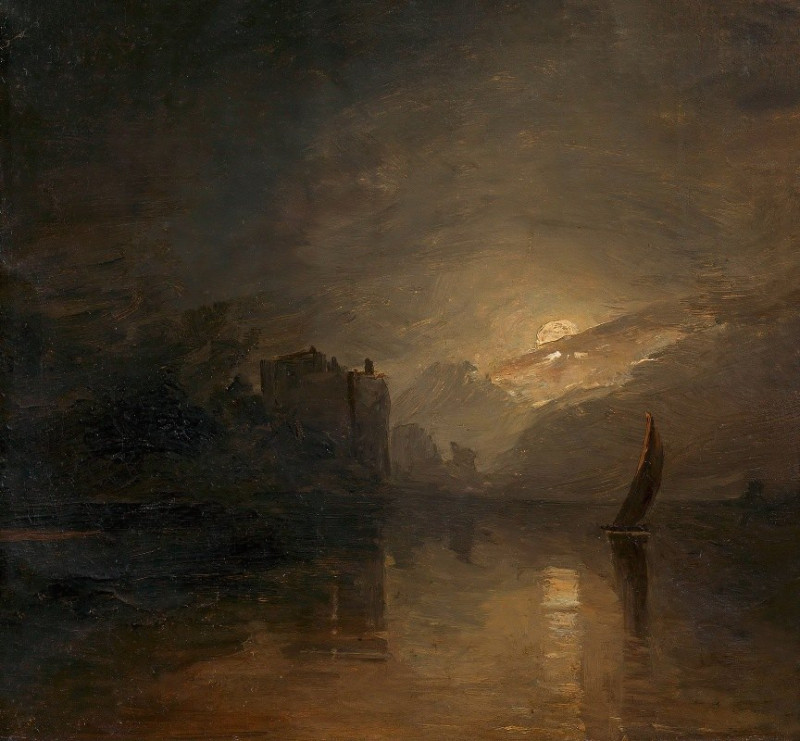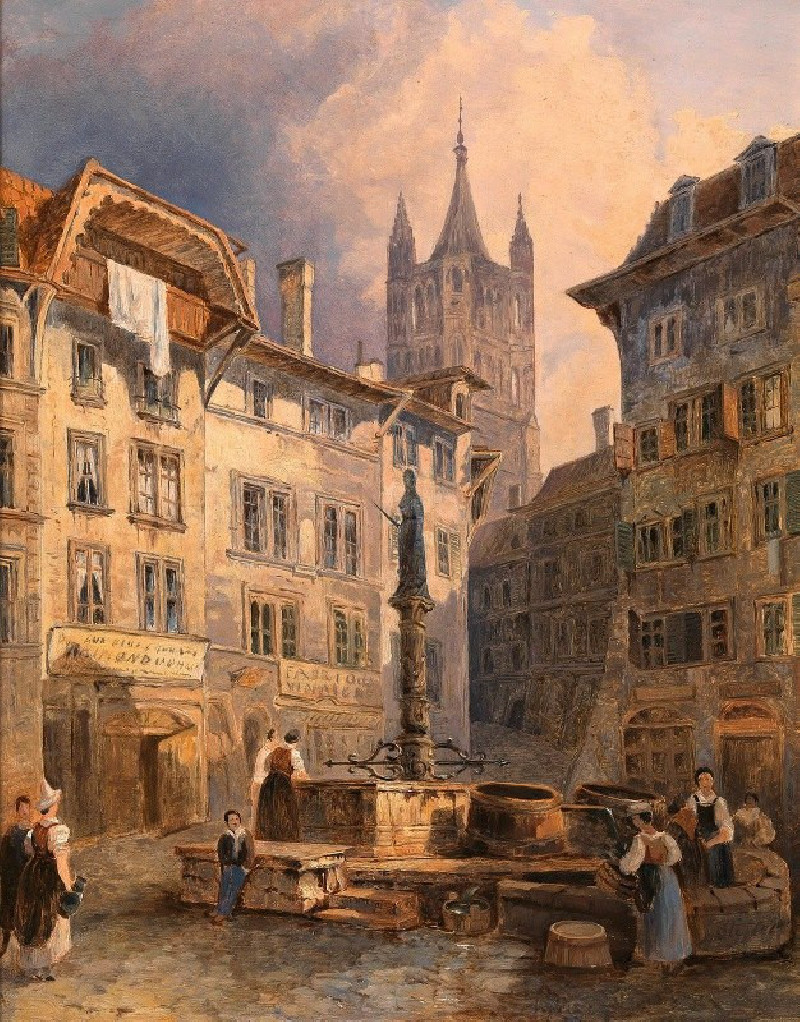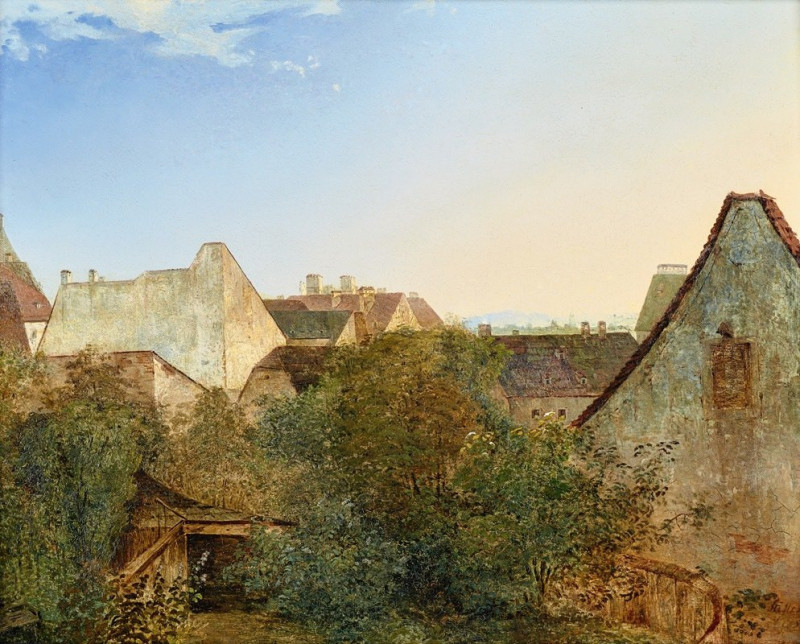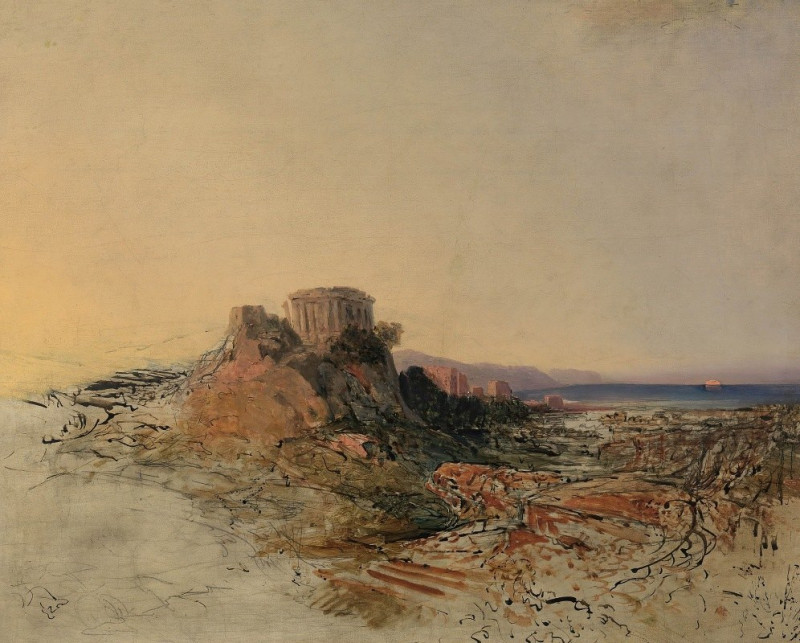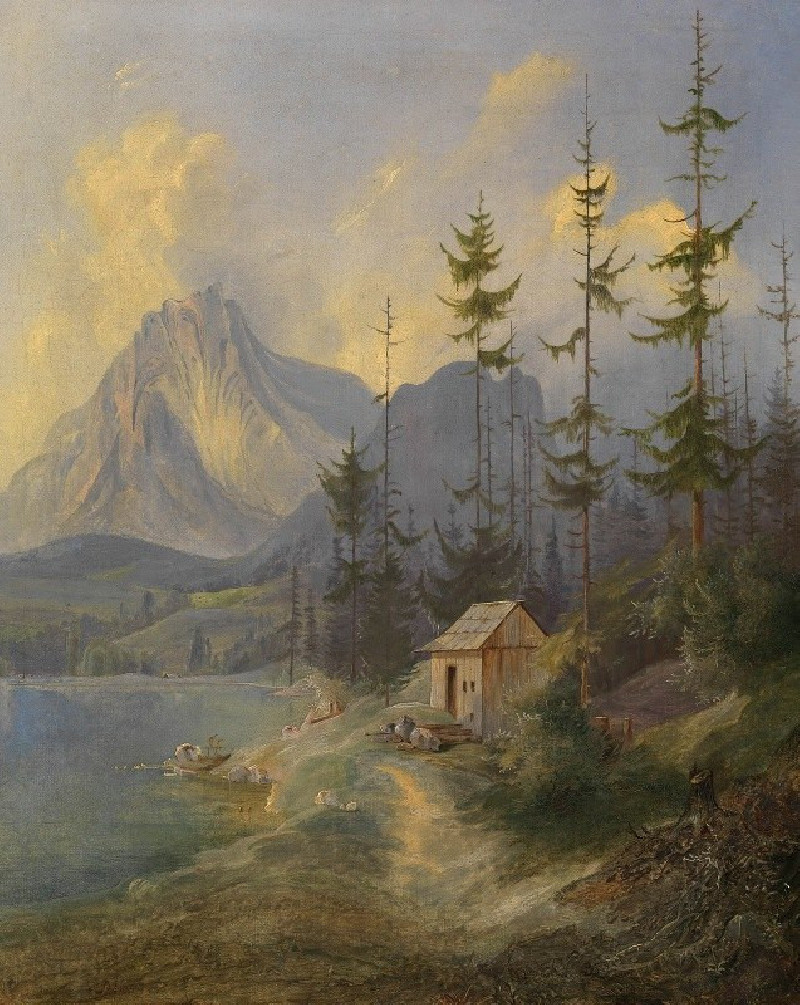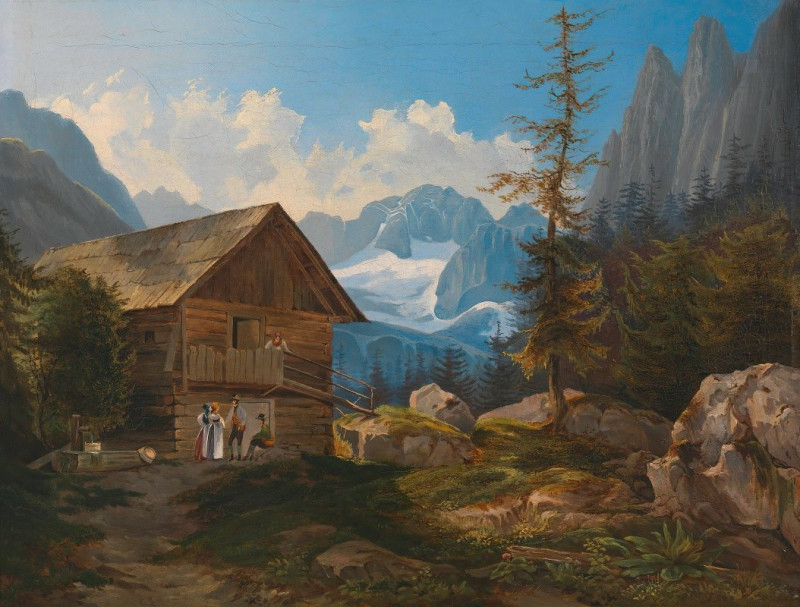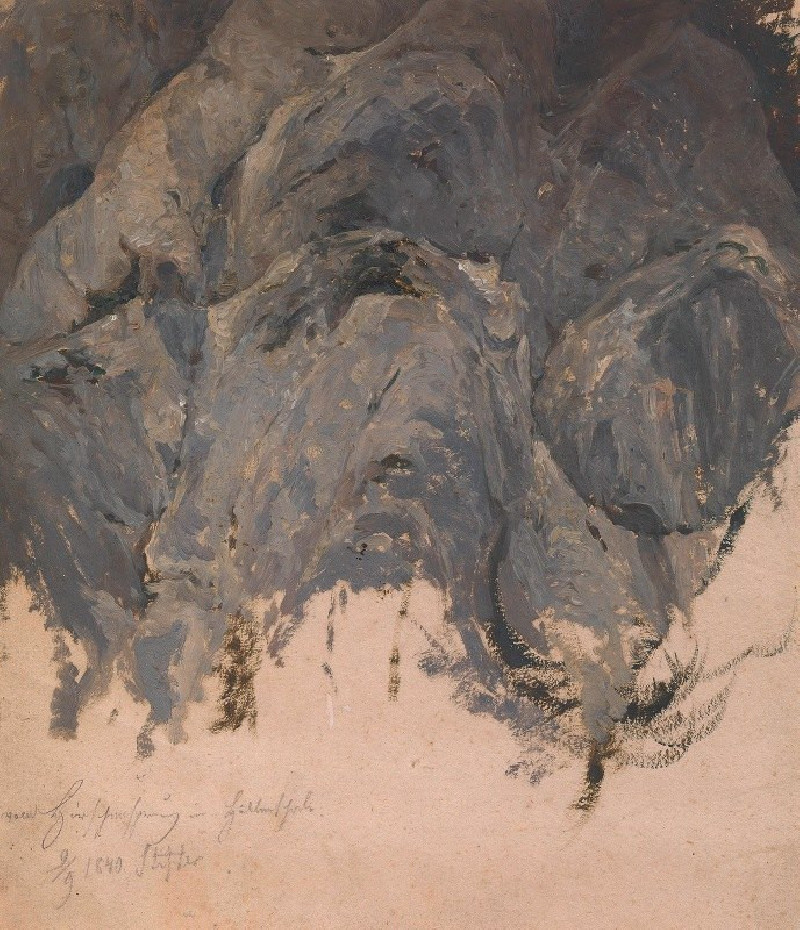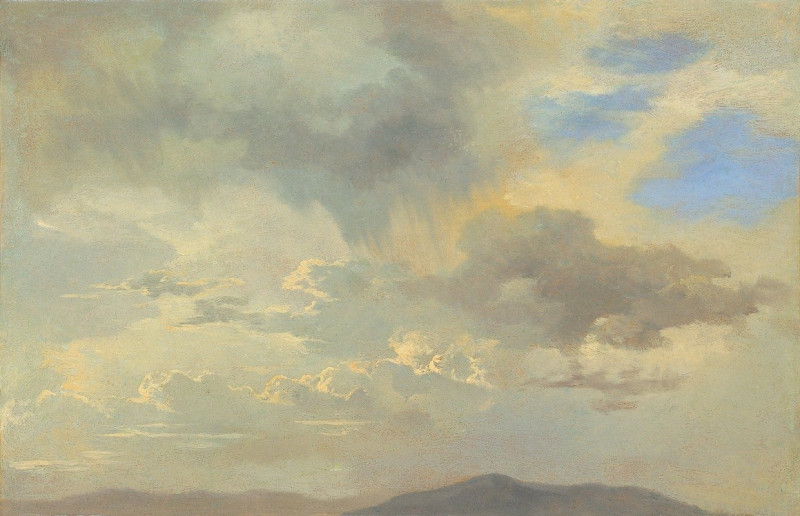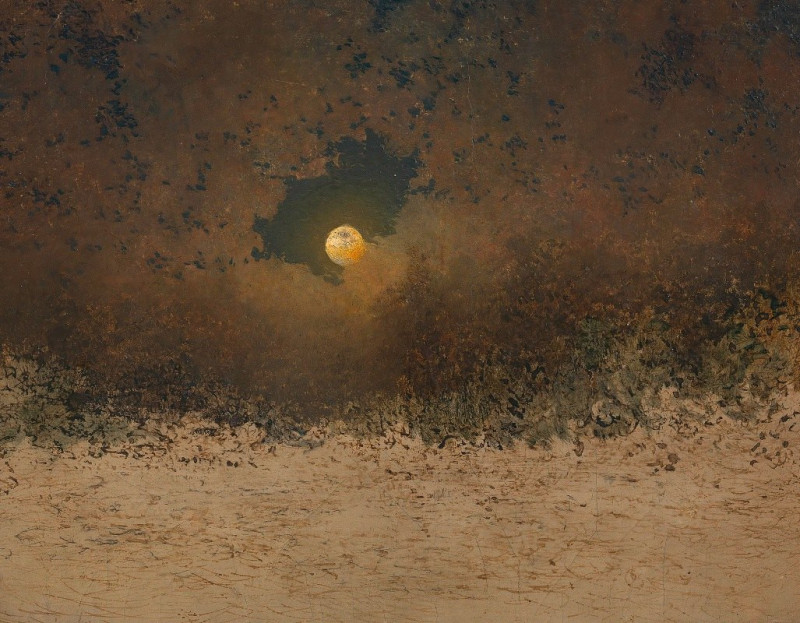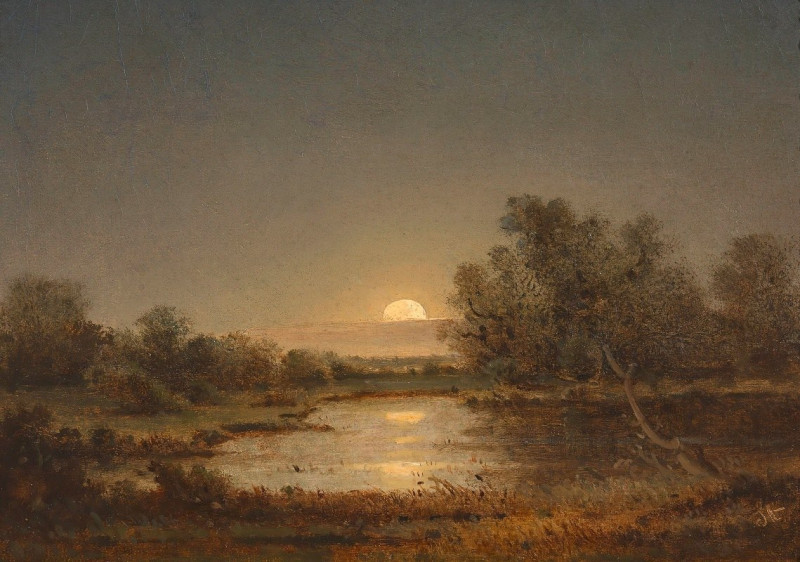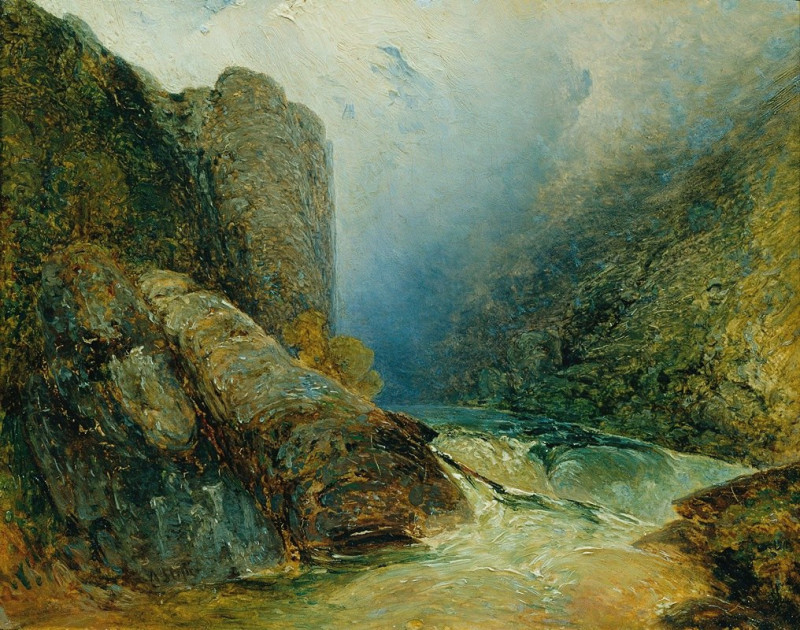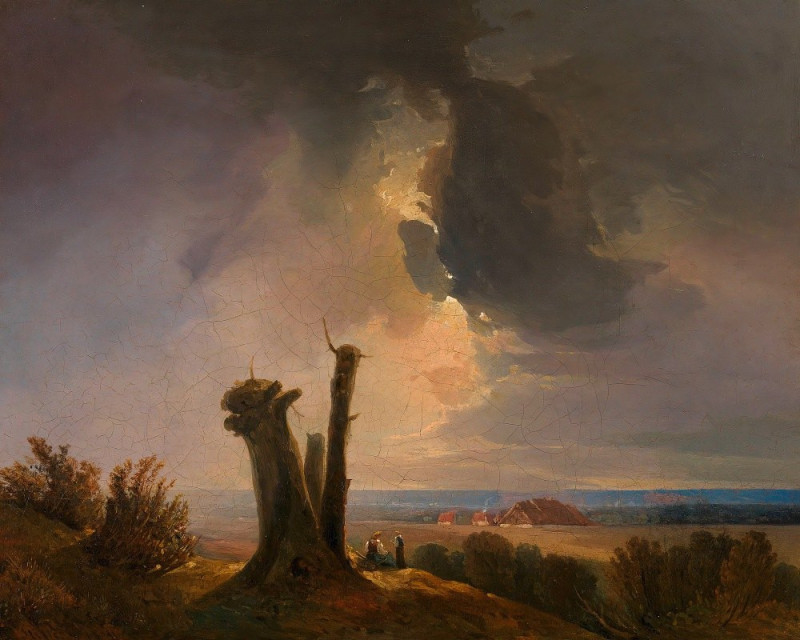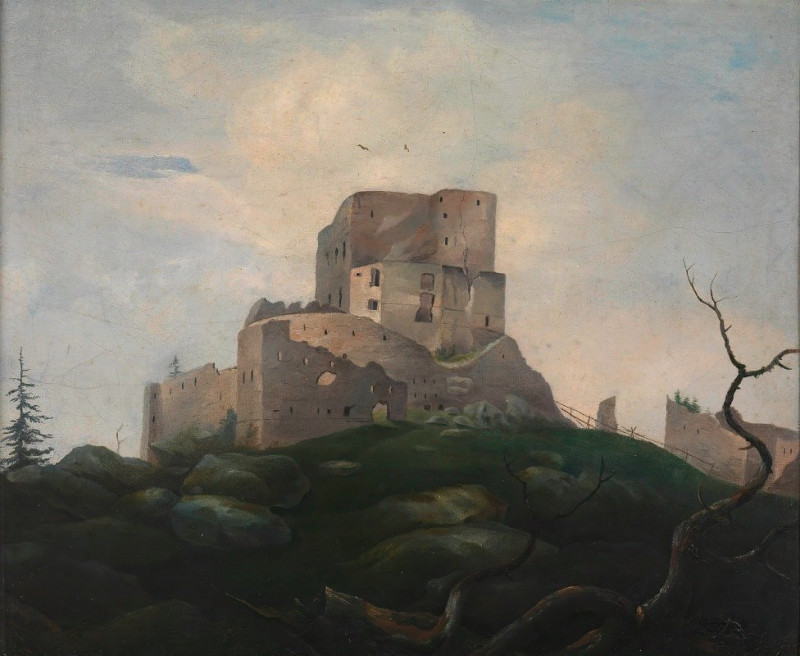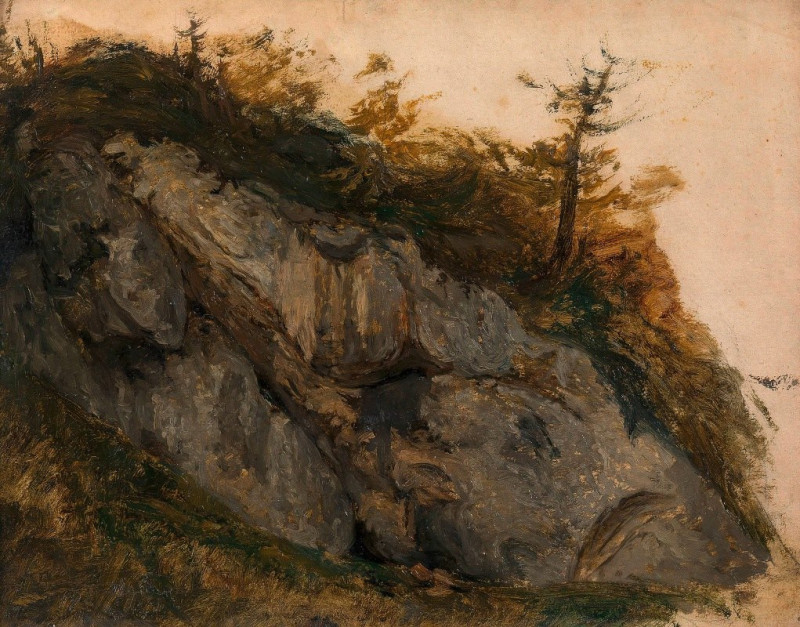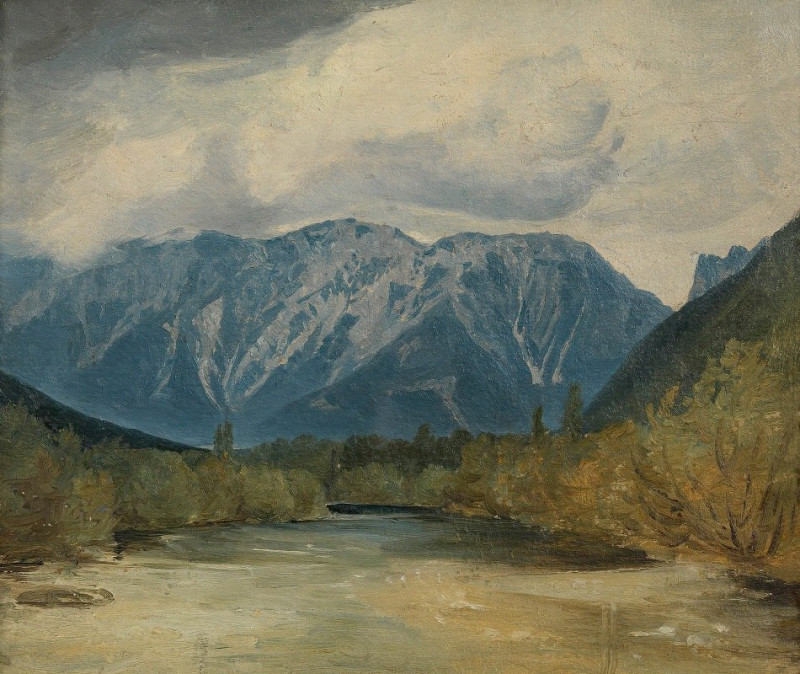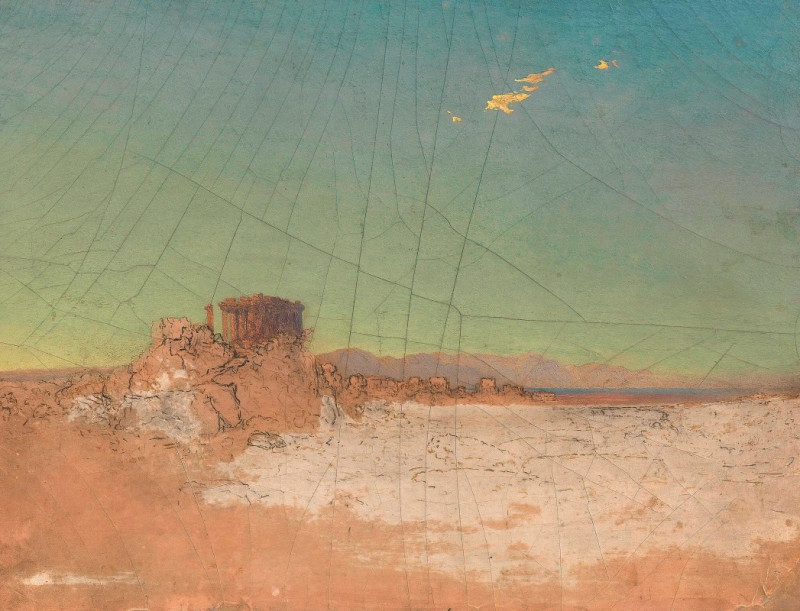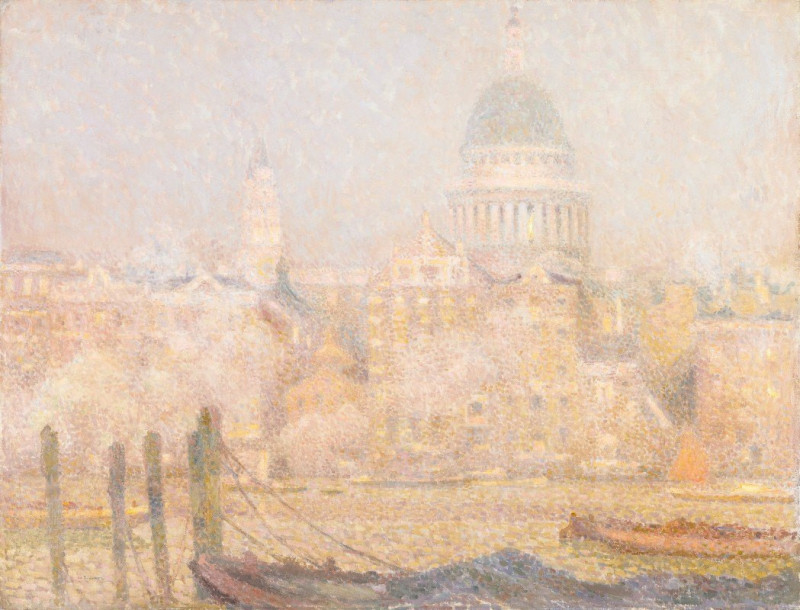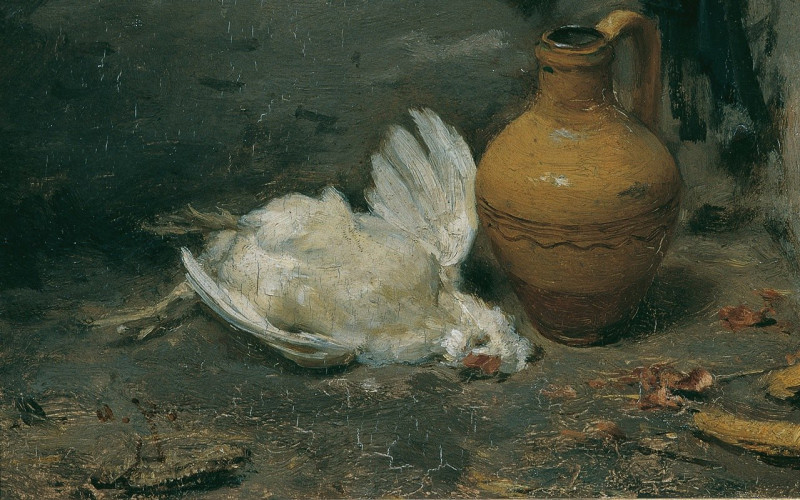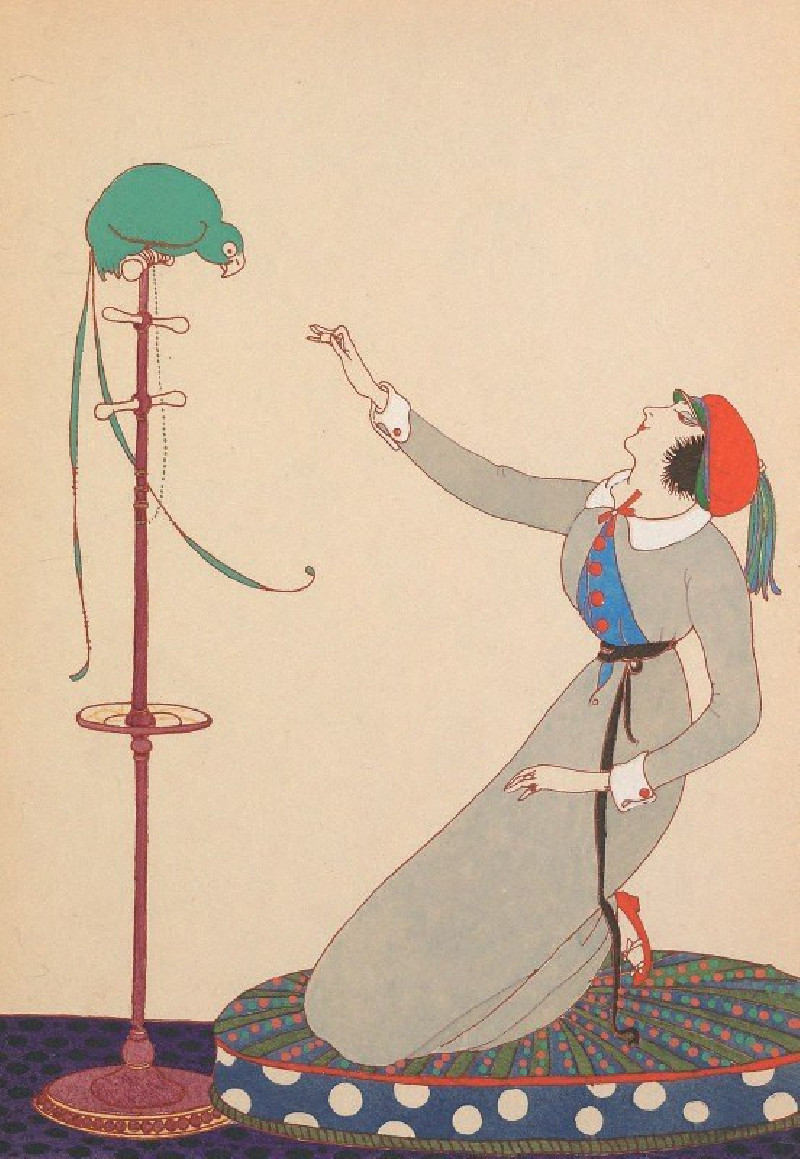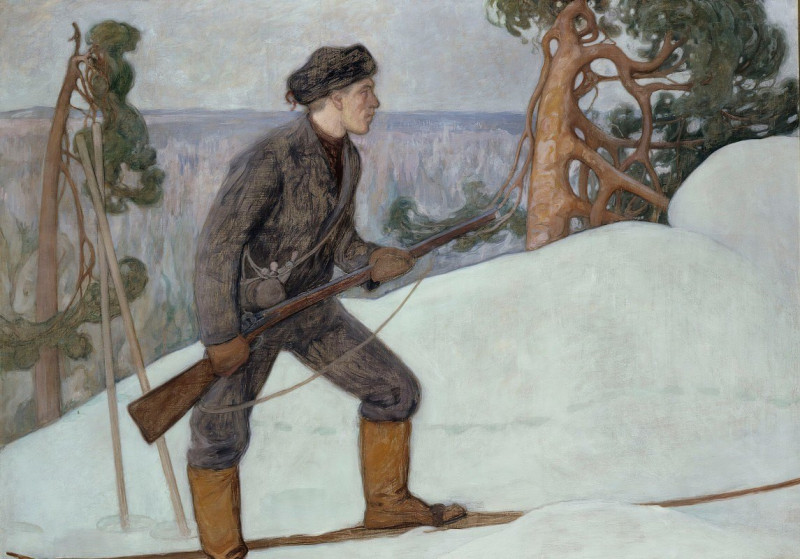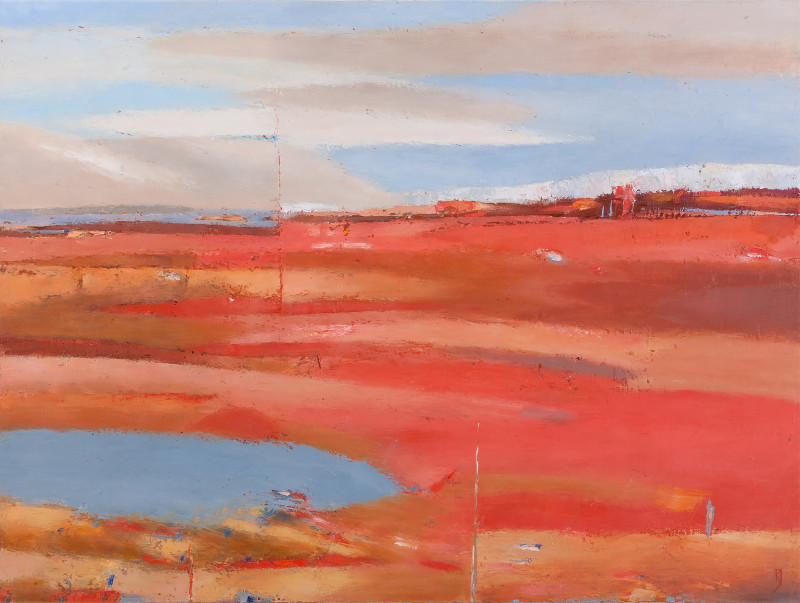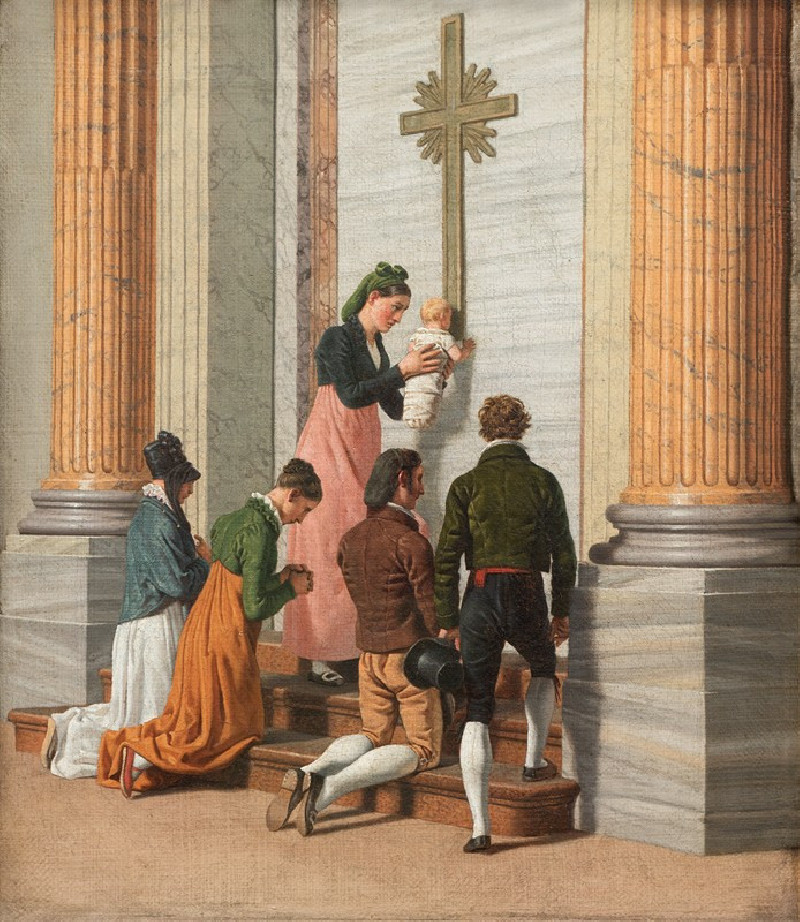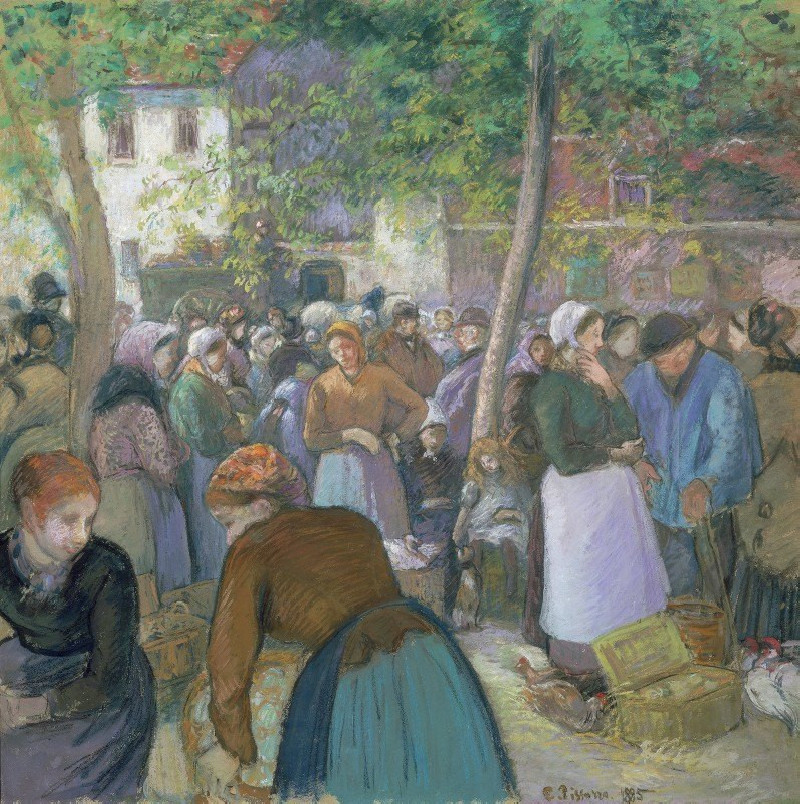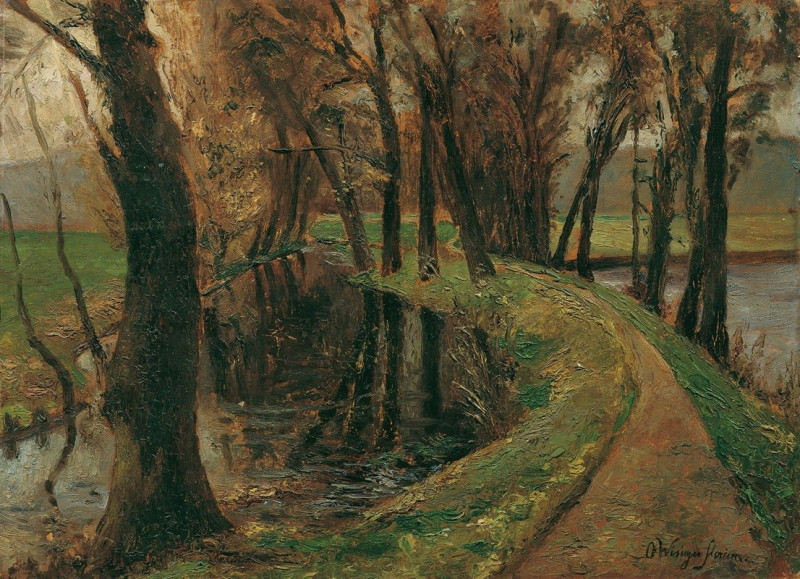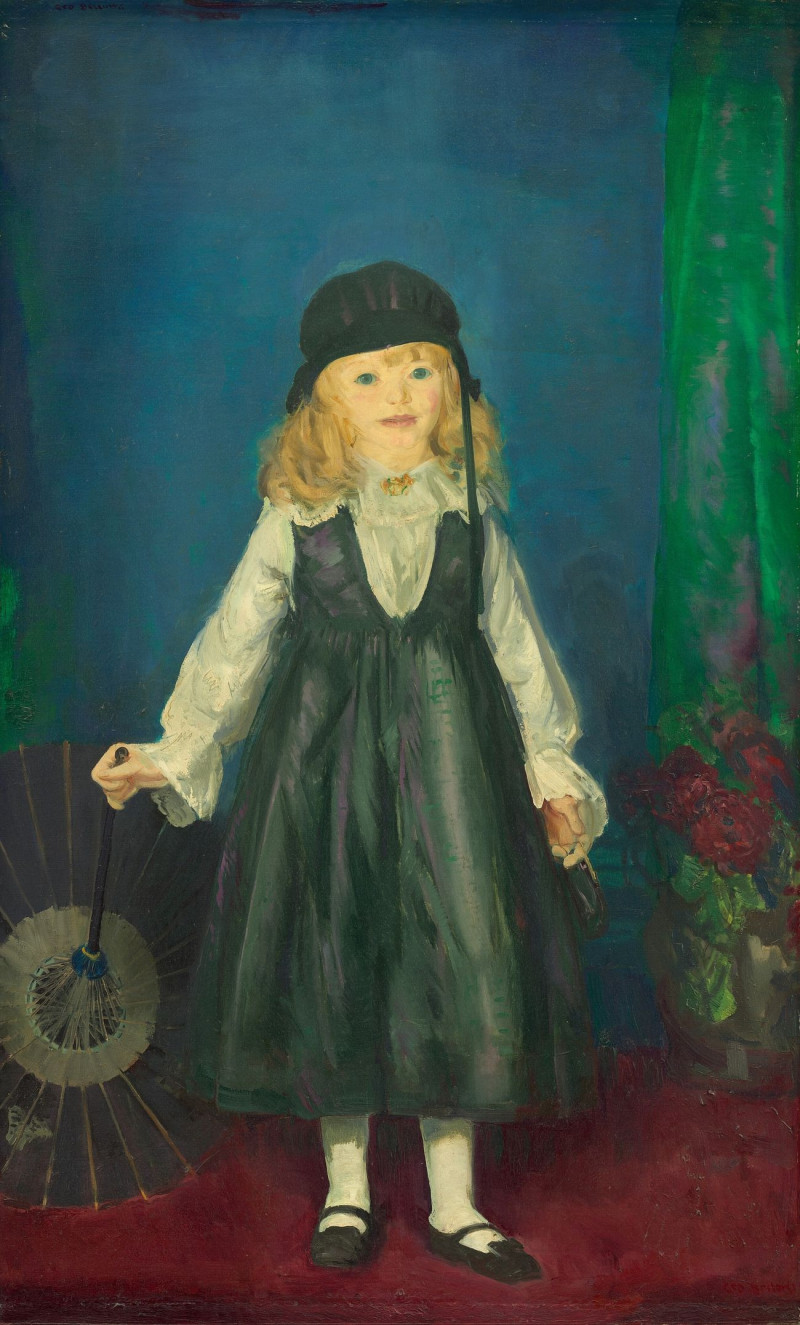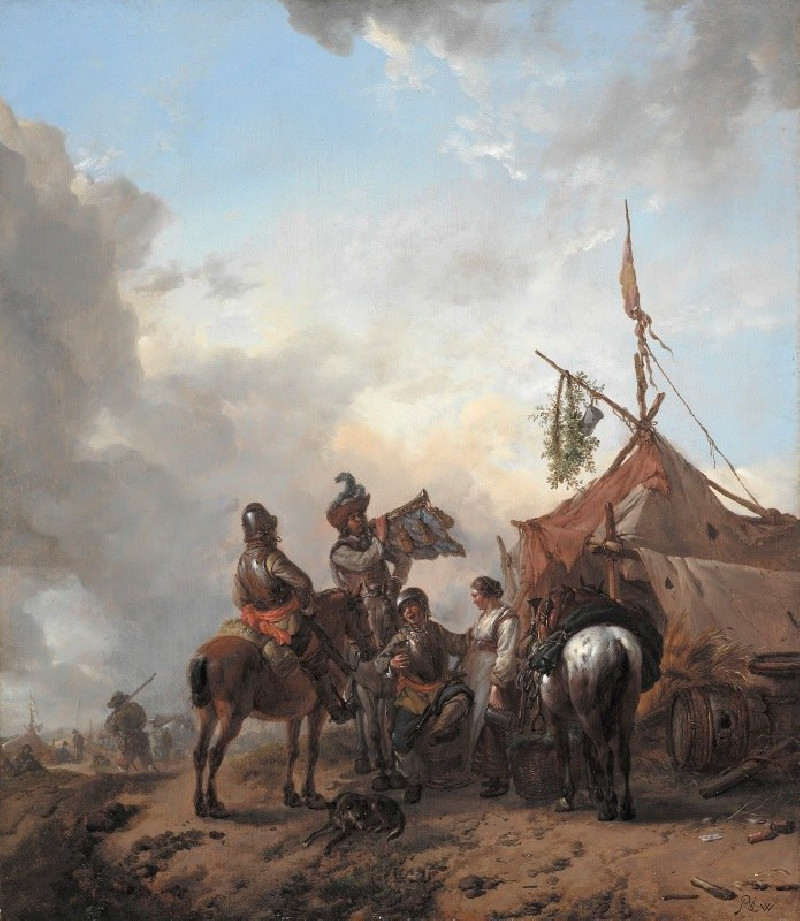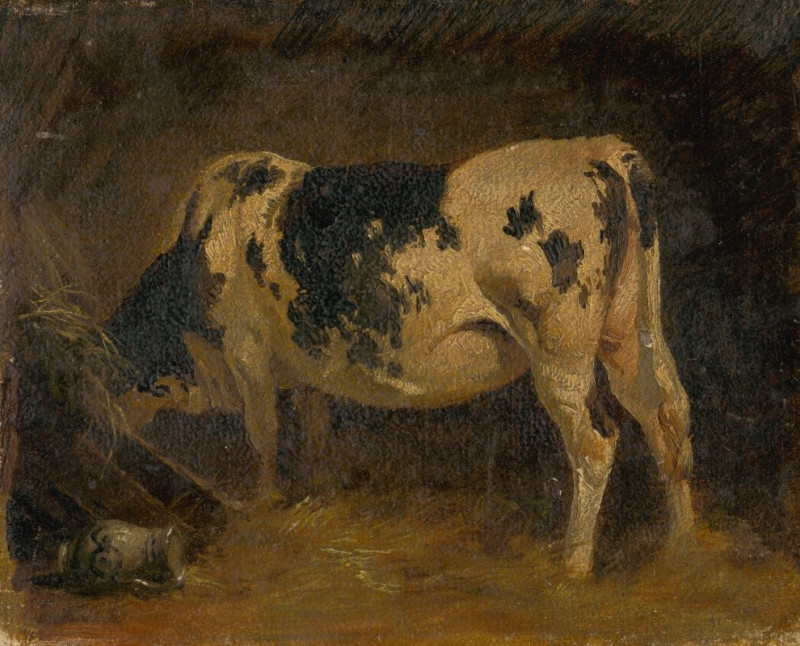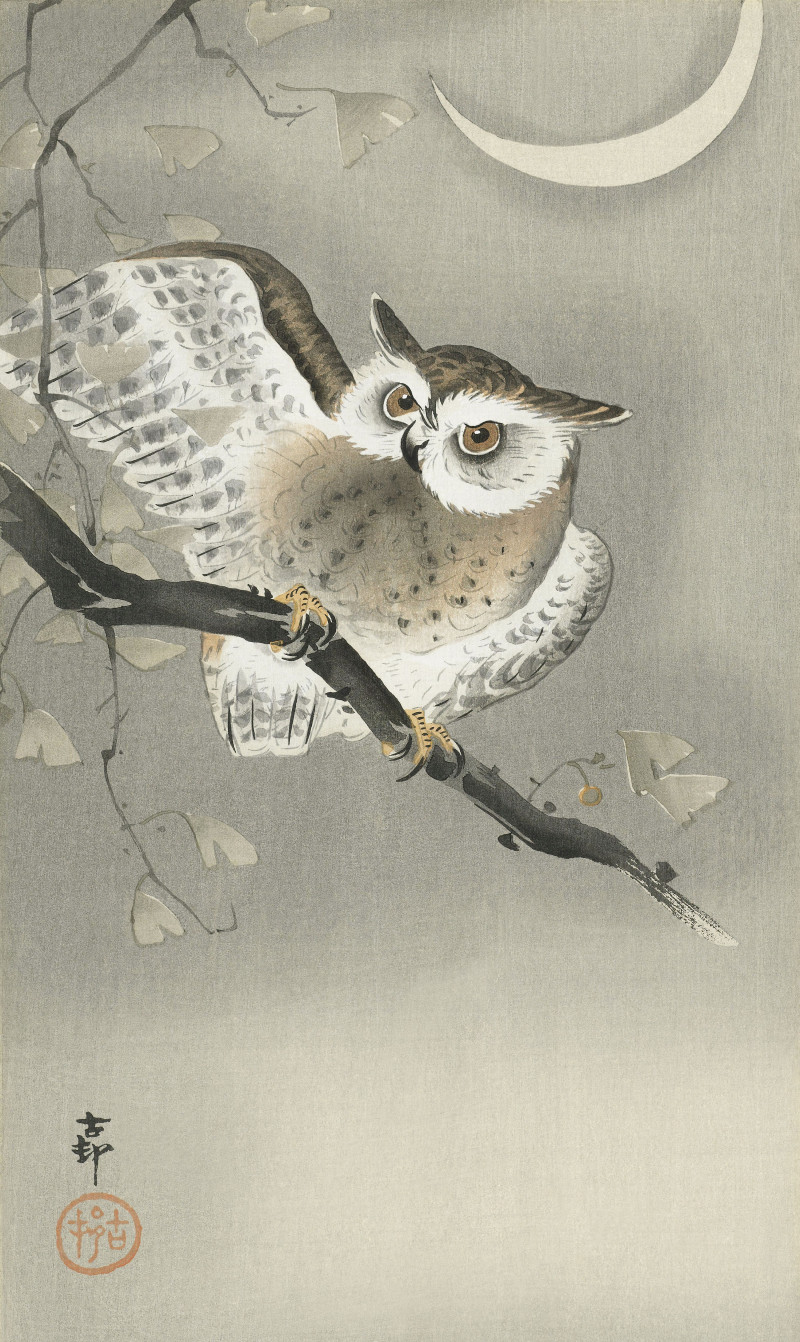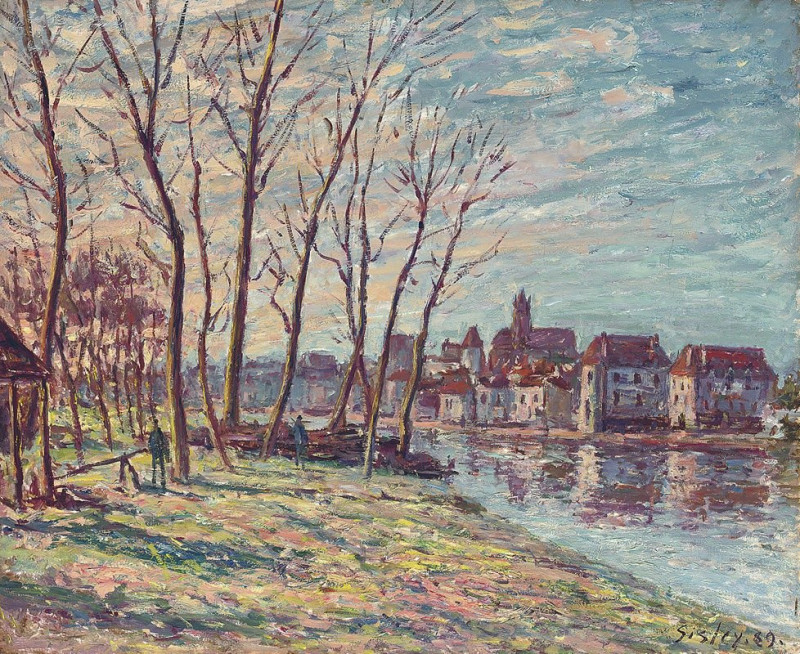Jagdhund (around 1866)
Technique: Giclée quality print
Recommended by our customers
More about this artwork
We are delighted to present "Jagdhund" (around 1866), a captivating work by Adalbert Stifter, a notable figure in 19th-century art and literature. This painting captures the lifelike depiction of a hunting dog, poised in a moment of quiet observation. The dog's keen expression and alert stance, paired with its finely detailed, russet coat, vividly convey the essence of a loyal and skilled companion in the hunt.The background is uniquely minimalistic, featuring an intricate network of fine, crackled lines that suggest both the aging of the material and perhaps the passage of time, emphasizing the timeless nature of the bond between humans and dogs. Stifter's skillful brushwork and attention to the naturalistic details of the dog's physique make this painting not only a tribute to the hunting breed but also an exploration of the animal's character and dignity."Jagdhund" invites viewers to appreciate the beauty and complexity of working animals, reminding us of the deep connections that have long existed between humans and their canine partners.
Delivery
Returns
Picture in the interior
Technique
Giclée quality print
Adalbert Stifter (1805–1868) was an Austrian writer, poet, painter and pedagogue. Born in Oberplan, Bohemia (now Horní Planá, Czech Republic), he was the eldest son of a wealthy linen weaver. Better known as a writer, Stifter was able to convey vivid and engaging landscapes in both his writing and painting. At the end of his life, exhausted by physical and mental illnesses, the artist died of suicide.

